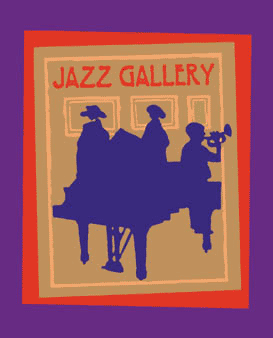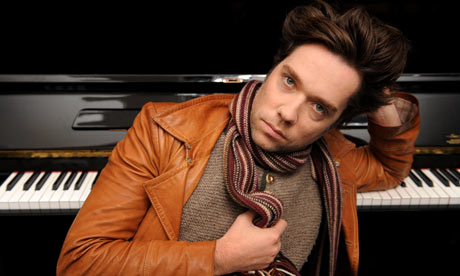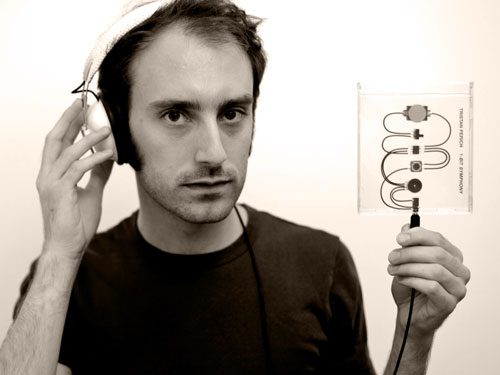Recently, I had the rare opportunity to speak with Tobias Fischer, writer, cultural editor for Germany's upmost publication for the world of recording "Print", and editor-in-chief of Tokafi.com -- a blog that unites classical music alongside contemporary music, jazz, electronic music and the various other popular musical sub-genres. Fischer has contributed pieces for publications such as All About Jazz, Klassik.com, Earlabs, Oro Molido, and MacLife. Additionally, he regularly writes for New Zealand's art-based magazine "White Fungus" which informs readers of worldwide visual arts, comics, literature, history, political commentary, satire, and experimental music. Since my area of focus is steeped in the idea of bridging the gap between music past and present, I wanted to hear his thoughts on today's classical music scene and its affect for the world at large.
MF: How do you view the impact of contemporary music in today's classical music scene?
TF: On the one hand, I feel very strongly about the inclusion of contemporary works into the program of classical concert halls, both as an enrichment and a logical continuation of lineage from the past into the present. At the same time, the mechanism which awards 20th and 21st century composers their 15 minutes of exposure in a system otherwise dedicated to Mozart and Beethoven seems to be mostly based on a vague sense of duty and a guilty conscience rather than passion. To me, there needs to be a tangible connection between the different pieces of a concert program which extends beyond the merely intellectual: At the opening might of the Mini-Mahler series in Berlin (http://www.minimahler.com), Mahler's music was juxtaposed with pieces by the second Viennese School – a both historically intriguing and musically sound concept, which did not take any long explanations to be understood. Allowing an audience to get to know a piece of new music before they come to the hall also makes sense. Perhaps the acceptance of contemporary music in classical concert halls would be higher if audiences were to receive a CD with selected recordings of the pieces as part of their subscription prior to the events?
MF: Why did you decide to become a writer and when?
TF: Probably as a boy in first grade. I can still remember being given the time to finish a story in an otherwise empty class room, while the others pupils had long sumbitted theirs, and thinking distinctly: This is what I want to do. Grammar school and a bad internship-experience at a local newspaper put that vision out of focus for a while - which is why it took another decade for me to finally make journalism my profession. Looking back, these years may not have been in vain: I spent entire days during my college-years reading nothing but reviews and articles and building up a huge desire to write about music.
MF: What did you write for All About Jazz, and how do you think jazz as a writer?
TF: I wrote a piece on Tom Heasley and Toss Panos' „Passages“ for them and it's been a highly interesting experience. I don't think any other online magazine out there sports a similarly thorough review process and thinks as deeply about the coherency and quality of the contributions to the site. Heasley, of course, isn't, strictly speaking, a jazz-musician and my personal interests have since tended even more towards the intersection between sound art and improvisation, which is why the review may actually be the last text I'll contribute. But it has to be said that jazz writing has influenced me greatly. Bill Evans liner notes to „Kind of Blue“ or, in fact, all of the wonderful introductions to the entire Blue Note catalogue are markey by the fusion between a kind of poetic vagueness and informational quality that I strive for. In my liner notes to the albums by drone/jazz/space/avantgarde ensemble 3seconds of air (http://www.3secondsofair.com), I am paying homage to these influences.
MF: What do you find is most crucial to depict about it for your readers?
TF: Jazz oscillates between personal freedom and elements of group interaction, so one of the interesting aspects is to portrait how the two relate within a particular ensemble constellation. I also enjoy the idea that complex strucures can arise from very simple premises – documenting and commenting on that process is part of the allure of writing about it.
MF: For writing about music in general, what do you think is key to convey to the reader?
TF: The point in music journalism has long been to describe and rate compositions, but these two topics are probably farthest away from what I feel to be important. To me, music journalism should offer a glimpse at the ideas behind a work of music and at the artistic vision invested into it. Ideally, it should work both as an introduction to the material, a spark for a fruitful debate and as a source of reference to which one can return after having listened to the music to compare one's thoughts with those of the author. This - rather than providing an opinion - engages an audience from my perspective. At the same time, I feel it is also vital to not just consider the reader in this equation. Music journalism is always a three-party-relationship and should involve the musician as well.
MF: Are conservatories in Europe readily accepting of teaching contemporary music technique and theory?
TF: Having actually never studied music at consevatory, I may not be the right person to ask here, but from what I hear, they definitely are. Turkish pianist Seda Röder (http://www.sedaroeder.com/) told me how her insight into 20th century composition was decisvely changed through her university-years in Germany and how, in general, universities serve as focal points of the scene. An important aspect is that a lot of this teaching is done by people genuinely passionate about the music and imbued with a desire to take it to a wider public.
MF: How do you view Historical Performance's future?
TF: Despite its quick rise to prominence, I think the movement is really just at its beginning. Probably the biggest problem lies in actually turning it into an artistic movement at all rather than, as is often the case, a marketing fad. Historic Practise deals with questions of interpretation an when applied sensibly, it simply means searching for the most precise realisation of a composer's intentions and to scrape away the obscurring layers of dust that have amassed over the centuries. Just putting on a wig and playing on badly-sounding instruments is not a valuable contribution to the debate.







